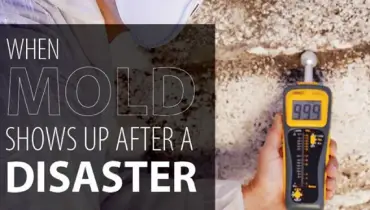
Mold growth is a common issue after disasters, posing health and structural risks. Rainbow Restoration highlights these key steps for effective mold management:
|
Natural disasters are not easy situations and often involve many kinds of damage. Mold growth is typically a side effect of different natural disasters, such as flooding or torrential rains. Find out how to prevent mold after these unfortunate situations.
How to Prevent Mold After a Flood and Water Damage
According to the National Flood Insurance Program (NFIP), the average flood insurance claim was over $35,000. This includes damaged personal items due to the growth of mold spores. In Canada, flood loss over the last 10 years amounts to just over $12.5 million in expenses and is the largest weather peril. To prevent mold growth from further damaging items, five steps should be taken:
- Check it out – For insurance purposes, it’s extremely important to take the initiative and inspect the flooded area. After the health and safety hazards have been cleared, you may enter the home or building and throw away certain items. Anything below the waterline should be trashed.
- Get it out – To remove standing water, use a special pump or water vacuum. If sand or other debris is remaining, use a shovel to disperse. Next, remove any plaster, drywall, carpet, or other flooring from the space. Make sure to keep a record of what’s damaged and what’s thrown out.
- Clean it up – Another round of vacuuming is often necessary, along with a pressure washing to remove any built-up stains. Wipe any surfaces with a cleaning solution to sanitize them. Typically a gallon of water with ¼ cup of bleach will work well. Let sit for 20 minutes and wipe to dry.
- Dry it out – Mold spores are constantly on the rise, especially when moisture is involved. To prevent any possibility of mold arising, make sure to dry out the affected area within 24 to 48 hours of the flood. For further assistance, contact a Rainbow Restoration professional.
- Keep it dry – If possible, keep the indoor humidity below 50 percent with a dehumidifier or air conditioning. If you’re concerned about future flooding or leaks, consider installing a battery-operated water-sensing alarm. These are best kept near a water heater, washing machine, or in the basement.
Mold Growth on Wet Drywall
Water stains always show on drywall when exposed to moisture. If the drywall isn’t quickly treated, it can be destroyed as the core loses its structure. Drywall damage can be short-term or long-term but truly depends on whether it begins as water damage or mold growth. It’s important to take care of wet drywall from the beginning to prevent mold growth altogether. Mold can begin to grow on drywall in just 24 to 48 hours. This proves in times of a flood or leak it’s crucial to act quickly on the issue.
For more information about residential mold removal and remediation and how to protect your home after a flood, request an appointment online or call Rainbow Restoration today!
